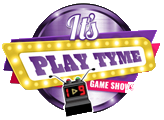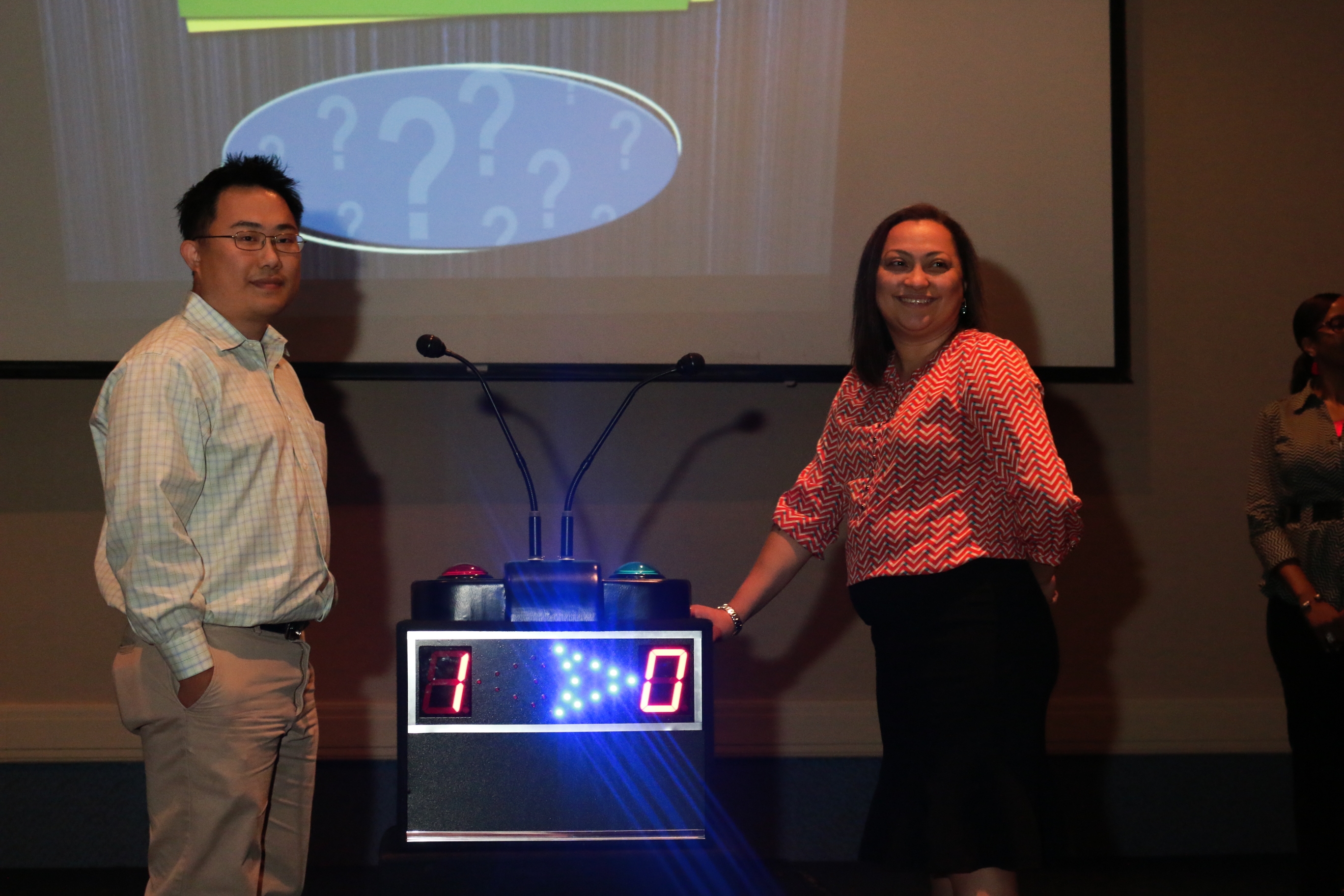Ever felt like there just aren’t enough hours in the day? You’re not alone. Many professionals struggle to balance tasks, meet deadlines, and stay productive. The good news? There’s a fun and effective way to tackle this challenge.
Imagine a management game that not only teaches you how to prioritize but also makes the process enjoyable. Activities like the Mayo Jar Lesson or the $86,400 exercise can transform how you approach your day. These tools are designed to help you focus on what truly matters, ensuring you make the most of every moment.
This article dives into various interactive methods tailored for employees, students, and teams. You’ll discover how these exercises improve scheduling, boost productivity, and even enhance teamwork.
Ready to take control of your day? Let’s explore how these strategies can work for you.
Key Insights
- Interactive games improve scheduling and prioritization skills.
- Activities like the Mayo Jar Lesson offer practical insights.
- These tools are effective for employees, students, and teams.
- Boosting productivity can lead to better work-life balance.
- Step-by-step instructions make implementation easy.
Introduction
Struggling to keep up with daily demands? You’re not alone. Many professionals face the same challenge, juggling multiple tasks while trying to stay productive. Traditional methods often fall short, leaving you feeling overwhelmed and unorganized.
Setting the Scene for Improved Productivity
Interactive methods, like games and activities, offer a fresh approach to developing essential skills. These tools make learning engaging and practical, helping you prioritize effectively. For example, the “$86,400” activity highlights the value of every second, encouraging better use of your day.
Why You Need New Strategies
Conventional approaches often fail to address modern challenges. A game-based method, however, can transform how you handle tasks. It’s not just about organizing your day—it’s about building habits that lead to long-term success.
Developing these skills can improve your daily workflow and enhance overall efficiency. Proven activities stimulate better work habits, ensuring you make the most of your time. Ready to take the next step? Let’s explore how these strategies can work for you.
| Challenge | Solution |
|---|---|
| Overwhelming workload | Interactive games for prioritization |
| Lack of focus | Activities like the “$86,400” exercise |
| Inefficient task execution | Skill-building through gamificatio |
Book a Live Game Show!
[Best Team Building Games - We Come to Your Location - 100% Satisfaction Guaranteed - Click Below - SERIOUS INQUIRIES ONLY]
The Importance of Time Management in Business
Every second counts when it comes to maximizing productivity. In business, inefficiencies can lead to significant financial losses. Wasted moments, when added up, can impact your bottom line in ways you might not expect.
Understanding the Cost of Wasted Time
Think about it: a single person has 86,400 seconds in a day. If even a fraction of those seconds are wasted, the cumulative effect can be staggering. For example, studies show that poor planning can reduce productivity by up to 25%.
Real-world examples highlight this issue. Unproductive meetings alone can account for 30% of an employee’s workweek. This translates to lost opportunities and increased costs for businesses.
How Effective Time Management Impacts Your Bottom Line
Adopting better strategies can reclaim lost moments and convert them into profitability. Prioritizing tasks, for instance, can boost efficiency by 20%. This not only improves job satisfaction but also enhances overall performance.
Here’s a way to visualize the impact:
| Challenge | Solution | Outcome |
|---|---|---|
| Unproductive meetings | Structured agendas | 25% increase in efficiency |
| Task overload | Prioritization techniques | 20% boost in productivity |
| Poor focus | Time-blocking methods | 15% reduction in wasted time |
Investing in better strategies isn’t just about saving seconds—it’s about transforming those moments into measurable business improvements. Start today and see the difference it makes.
Time Management Games and Activities for Boosting Productivity
What if you could turn productivity into an engaging experience? Interactive exercises like the Mayo Jar Lesson and To Do Matrix offer a fresh approach to tackling daily challenges.
These tools are designed to make prioritization and decision-making both practical and enjoyable.
What They Are and How They Work
These exercises are structured to simulate real-world scenarios. For example, the Mayo Jar Lesson uses a visual metaphor to teach task priority. Participants fill a jar with rocks, pebbles, and sand, representing tasks of varying importance. This hands-on approach helps you understand how to allocate resources effectively.
Another great example is the To Do Matrix. It breaks down tasks into categories like urgent, important, and non-essential. This method ensures you focus on what truly matters, reducing wasted effort on low-impact activities.
Benefits for Your Team and Organization
Adopting these strategies can revolutionize how your team operates. Improved task priority leads to better resource allocation and faster project completion. Enhanced teamwork is another key benefit, as these exercises encourage collaboration and problem-solving.
For instance, the Mayo Jar Lesson fosters open communication about task importance. Similarly, the To Do Matrix helps teams align on goals, ensuring everyone is on the same page. These activities not only boost productivity but also create a more cohesive work environment.
“Interactive exercises transform how teams approach daily challenges, turning productivity into a shared goal.”
Ready to take the next step? Explore team-building activities that can further enhance your team’s efficiency and collaboration.
Interactive Group Games to Sharpen Team Skills
Ever wondered how your team can thrive under pressure? Interactive group games like Blind Polygon and the Big Picture Puzzle Challenge are designed to simulate real-world scenarios. These exercises push your team to communicate clearly and make quick decisions, even when the clock is ticking.
Building Communication Under Pressure
Blind Polygon is a perfect example of a game that tests communication skills. In this activity, team members are blindfolded and must form a specific shape using a rope. Without visual cues, they must rely on verbal instructions and trust to succeed. This mirrors workplace situations where clear communication is critical, especially under a tight deadline.
The Big Picture Puzzle Challenge takes it a step further. Teams must assemble a large puzzle with limited information. Each member holds a piece of the puzzle, forcing them to collaborate and share insights. This exercise highlights the importance of teamwork and effective communication in solving complex problems.
Enhancing Decision-Making Through Play
These games also sharpen decision-making skills. In Blind Polygon, teams must strategize quickly to achieve their goal. Similarly, the Big Picture Puzzle Challenge requires participants to prioritize tasks and allocate resources efficiently. These scenarios mimic real-world pressures, helping teams develop essential management skills.
By practicing in a low-stakes environment, your team can build confidence and improve their ability to handle high-pressure situations. These exercises not only enhance individual skills but also foster a stronger, more cohesive team.
| Game | Focus Area | Outcome |
|---|---|---|
| Blind Polygon | Communication & Trust | Improved verbal coordination |
| Big Picture Puzzle Challenge | Collaboration & Problem-Solving | Enhanced teamwork |
Ready to take your team’s skills to the next level? Explore more communication-enhancing activities that can transform how your team works together.
Prioritization Techniques Using Hands-On Activities
Do you find it hard to focus on what truly matters in your daily routine? Many people struggle to distinguish between tasks that drive results and those that waste energy. The key lies in mastering prioritization through practical, hands-on methods.
Identifying Tasks That Matter
Not all tasks are created equal. Some have a high impact on your goals, while others barely move the needle. Learning to separate the two is essential for maximizing productivity. Hands-on exercises like the To Do Matrix help participants categorize tasks based on urgency and importance.
For example, the To Do Matrix divides tasks into four quadrants: urgent and important, important but not urgent, urgent but not important, and neither. This visual tool makes it easier to focus on what truly matters, reducing wasted effort on low-value activities.
“Prioritization isn’t about doing more—it’s about doing what matters most.”
Practical Methods for Daily Improvement
Even small changes can lead to big results. Saving just one minute each day adds up to over six hours a year. Hands-on activities like drawing time breakdowns allow participants to visually map their daily routines. This helps identify time-wasters and reallocate energy to high-impact tasks.
Another effective method is the Impact vs. Urgency Matrix. It encourages participants to evaluate tasks based on their long-term benefits rather than immediate demands. This approach ensures you’re not just busy—you’re productive.
| Challenge | Solution | Outcome |
|---|---|---|
| Task overload | To Do Matrix | Clear focus on priorities |
| Wasted time | Time breakdowns | Improved daily efficiency |
| Low-impact tasks | Impact vs. Urgency Matrix | Better resource allocation |
Mastering prioritization doesn’t just improve your daily workflow—it transforms how you approach your work. By focusing on what truly matters, you can achieve more with less effort. Start today and see the difference it makes.
The Mayo Jar Lesson: A Visual Approach to Time Management
Ever thought about how you can visually prioritize your tasks? The Mayo Jar Lesson offers a powerful metaphor for effective scheduling.
This hands-on exercise uses simple materials, rocks, pebbles, and sand—to teach you how to focus on what truly matters.

Here’s how it works: Start with an empty jar. The rocks represent your most important tasks—things that drive significant results. Place them in the jar first.
Next, add the pebbles, which symbolize secondary tasks. Finally, pour in the sand, representing smaller, less critical activities. The lesson? If you start with the sand, there’s no room for the rocks.
This exercise highlights the challenge of fitting everything into a limited space—just like your day. It forces you to think critically about what deserves your attention. Participants often realize they’ve been prioritizing low-impact tasks, leaving little room for what truly matters.
“The Mayo Jar Lesson transforms how you view your daily workload, making prioritization tangible and actionable.”
After completing the exercise, debriefing is key. Discuss what the rocks, pebbles, and sand represent in your work or personal life. Ask questions like: Are you focusing on the right tasks? What can you delegate or eliminate? This reflection helps solidify the lesson and encourages better habits.
For group settings, this activity fosters collaboration. Each member can share their perspective on task importance, leading to a more cohesive approach to workload management. It’s not just about individual productivity—it’s about aligning priorities as a team.
| Material | Represents | Key Takeaway |
|---|---|---|
| Rocks | High-priority tasks | Focus on what drives results |
| Pebbles | Secondary tasks | Address after priorities |
| Sand | Low-impact activities | Delegate or eliminate |
Ready to try it? Gather a jar, rocks, pebbles, and sand, and see how this simple exercise can transform your approach to daily tasks. The Mayo Jar Lesson isn’t just a metaphor—it’s a practical tool for lasting change.
Creative Challenges: From “How Long is a Minute?” to Ace of Spades
Have you ever noticed how differently people perceive the same amount of time? Creative challenges like “How Long is a Minute?” and the Ace of Spades game offer unique ways to test and refine your understanding of time.
These exercises are designed to be both fun and insightful, helping you develop better organizational skills.
Quick Challenges to Test Your Perception of Time
The “How Long is a Minute?” activity is a simple yet effective way to explore time perception. Participants close their eyes and estimate when 60 seconds have passed without looking at a clock.
The results often vary widely, with some people guessing too short and others too long. This exercise highlights how subjective time can be and encourages you to think critically about how you allocate your day.
Another engaging challenge is the Ace of Spades game. In this activity, participants are given a deck of cards and asked to find the Ace of Spades as quickly as possible.
One group is organized, while the other is disorganized. The organized group typically finishes faster, demonstrating the value of a clear strategy in completing tasks efficiently.
Boosting Critical Thinking and Organization
These challenges are more than just games—they’re tools for improving critical thinking. By reflecting on your performance, you can identify areas for improvement.
For instance, the Ace of Spades game teaches the importance of planning and structure, while “How Long is a Minute?” helps you become more aware of how you perceive time.
These exercises also foster better organization. When you understand how you perceive time, you can create a schedule that aligns with your natural rhythms.
Similarly, learning to approach tasks with a clear plan can reduce wasted effort and increase productivity.
| Challenge | Focus Area | Outcome |
|---|---|---|
| How Long is a Minute? | Time Perception | Improved awareness of time allocation |
| Ace of Spades | Organization & Strategy | Faster task completion |
Ready to try these challenges? Gather your team or test them on your own. These creative exercises are a fun way to boost your critical thinking and organizational skills, helping you make the most of every moment.
Enhancing Productivity with Time Squared and the To-Do Matrix
Are you overwhelmed by the chaos of your daily schedule? Two powerful tools—Time Squared and the To-Do Matrix—can help you regain control. These methods are designed to simplify your routine and ensure you focus on what truly matters.
Mapping Your Daily Routine Effectively
Time Squared involves dividing your day into blocks and assigning tasks to each hour. This visual approach makes it easier to see where your time goes. By mapping out your schedule, you can identify inefficiencies and reallocate energy to high-impact activities.
The To-Do Matrix takes it a step further. It categorizes tasks into four quadrants based on urgency and importance. Urgent and important tasks go in Quadrant 1, while long-term goals fit into Quadrant 2. This method ensures you’re not just busy—you’re productive.
“Visual tools like the To-Do Matrix transform how you approach your day, turning chaos into clarity.”
These techniques bridge the gap between a busy life and meaningful accomplishments. By focusing on what truly matters, you can achieve more with less effort. Integrating these strategies into your routine can transform how you allocate each hour.
Ready to take the next step? Explore activities to boost morale and further enhance your productivity. Start today and see the difference it makes in your daily life.
Building Team Cohesion Through Time Management Icebreakers
Looking for a way to bring your team closer while improving efficiency? Icebreaker activities designed around task handling can be the answer. These exercises not only break the ice but also enhance communication and collaboration, setting the stage for smoother workflows.

Fun Activities That Strengthen Team Bonds
Activities like “Lists & Priorities” challenge teams to balance urgent tasks with lighthearted interactions. For example, participants might list their top three priorities for the week and then share a fun fact about themselves. This blend of work and play fosters a sense of community while keeping the focus on productivity.
Another engaging option is “Team Timeline,” where members visually represent their experiences and priorities. This exercise encourages authentic communication and helps everyone understand each other’s perspectives. It’s a great way to build trust and alignment within the group.
Debrief Strategies to Maximize Learning
After the activity, a structured debrief is essential. Start by asking open-ended questions like, “What did you learn about your team’s priorities?” or “How can we apply this to our daily tasks?” This reflection ensures that everyone extracts key insights and applies them to their work.
“A well-executed debrief turns fun activities into lasting lessons, reinforcing the importance of effective task handling.”
Encourage participants to share their thoughts openly. This not only reinforces learning but also strengthens team bonds by fostering a culture of transparency and collaboration.
These icebreaker activities do more than just break the ice—they create a foundation for stronger teamwork and better communication. By integrating these exercises into your routine, you can transform how your team operates, leading to enhanced performance and smoother workflows.
Adapting Games for Different Audiences and Environments
How can you ensure that every participant feels engaged and valued? The answer lies in customization. Not every activity works for every group, and tailoring exercises to fit specific needs is essential for success.
Customizing Activities for Employees, Students, and More
Different groups have unique needs. For employees, activities like the Blind Polygon can be modified to focus on workplace scenarios. For students, simpler versions with clear instructions work best. The key is to adjust the challenge to match the group’s skill level.
For example, in the Blind Polygon exercise, you can increase the complexity for experienced teams by adding more shapes. For beginners, start with basic forms and gradually introduce challenges. This approach ensures everyone stays engaged and learns effectively.
Creating a Versatile Learning Experience
Versatility is crucial for keeping participants interested. Activities like the Paper Boat competition can be adapted for different environments. In a classroom, focus on creativity and teamwork. In a corporate setting, emphasize strategy and problem-solving.
By making slight changes, such as altering the rules or adding time constraints, you can create a fresh experience for each group. This ensures that the activity remains relevant and impactful, regardless of the setting.
“Adapting activities to fit the audience ensures that every participant finds value in the experience, fostering both learning and engagement.”
Ready to explore more ways to customize activities? Check out these indoor and outdoor group activities for inspiration. Start tailoring your approach today and see the difference it makes.
Strategies to Integrate Time Management in Your Daily Routine
How can you make every moment count in your daily routine? The key lies in adopting practical strategies that fit seamlessly into your schedule. By focusing on what truly matters, you can achieve more with less effort.
Implementing Best Practices in the Workplace
Start by setting clear priorities. Use tools like the To-Do Matrix to categorize tasks based on urgency and importance. This helps you focus on high-impact activities first, ensuring nothing falls through the cracks.
Regular team check-ins can also improve efficiency. Discussing priorities and progress keeps everyone aligned and accountable. This fosters a culture of continuous improvement and shared responsibility.
“Clear priorities and regular reviews transform how teams approach their workload, turning chaos into clarity.”
Continuous Improvement Through Regular Review
Reflect on your progress weekly. Identify what worked and what didn’t. This helps you refine your approach and make incremental improvements over time.
Encourage feedback from your team. Their insights can highlight areas for growth and ensure everyone feels valued. This collaborative approach strengthens teamwork and drives better results.
For more strategies, explore these time management activities to enhance your routine. Start today and see the difference it makes in your daily life.
Conclusion
Effective strategies like Time Squared and interactive exercises can transform how you approach daily tasks. These tools help prioritize what truly matters, ensuring you focus on high-impact activities. From creative challenges to team-building icebreakers, the methods discussed offer practical ways to enhance productivity.
Improved task handling leads to measurable benefits, both individually and organizationally. Teams that adopt these practices often see better communication, faster project completion, and increased job satisfaction. The key is to experiment with these strategies in your own environment.
Ready to take control of your routine? Start integrating these techniques today. By doing so, you’ll not only boost efficiency but also achieve lasting success in your professional and personal life.









